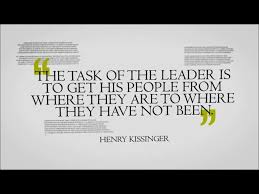
Last week I attended a fabulous talk by Prof Dave Ulrich who is the Rensis Likert Professor at the Ross School of Business, University of Michigan which was hosted by AIF. Prof. Ulrich spoke on a topic close to my heart—how businesses can create their competitive advantage, in today’s environment, through talent. In his talk, Prof Ulrich highlighted the importance and changing function of human resource within an organisation.
Being involved in developing (and soon implementing) a ‘cultural awakening’ project in my day-job it was fascinating to learn (more) about these three essential elements that organisations often overlook.
- Talent
- Leadership
- Culture
People are at the core of anything and everything organisations do in pursuit of their business. Yet we often overlook ‘talent’ coming from a product-centric point of view where business management is concerned. But it’s the process of identifying key talent and having their development at the forefront that enables an organisation to build a competitive edge.
The process of developing talent, within an organisation, impacts upon the ‘leadership’ and the ‘culture’ of an organisation.
Leaders of organisations, if they are truly interested in the long-haul, have to selflessly put the development of their people first and foremost. Leaders create leaders not followers. Employees followed by the external stakeholders or, people who make up the environment in which the business functions’, have to be the priority in terms of strategic decisions the business makes.
There are two critical steps for this:
- Leaders in the organisation (not just the CEO) have to have clarity in the purpose of the business. They should be able to join-the-dots strategically and provide strong direction to their teams.
- Leaders have to have empathy and be able to display that empathy.
In essence, what these two critical steps do is to evaluate the leaders themselves first, as leaders need to have high emotional intelligence and strong communication skills to engage with all ranks of employees.
The displayed leadership styles lead to a, often non-articulated, creation of the organisational culture. As humans we are wired for social acceptance and decades of environmental practice in the ‘command & control’ style of management has left us with the behaviour of adopting what we see our leaders do. But there is light at the end of the tunnel as more and more organisations, globally, are waking up to a new reality—people are asking for empowerment & recognition.
Where organisational culture is concerned there is a lot going on with regards to employee engagement. In a nut-shell employees, or the people who are the face of the organisation, are asking to be heard, to feel their suggestions are valuable to the organisation so that they feel they are of value.
If we now put TLC together it’s easy to see how powerful a strategic advantage for organisations it is.
Focusing on talent development leads to ensuring having the right competencies & commitment in place to generate healthy contribution to the organisation. In order to get to this stage good, authentic leadership is absolutely critical. The leadership coupled with the right people in the right roles, contributing positively creates a culture of empowerment, accountability and most importantly innovation where employees feel they can contribute new ideas and not be afraid of failure.
Did you like this post? Do share your thoughts and comments.